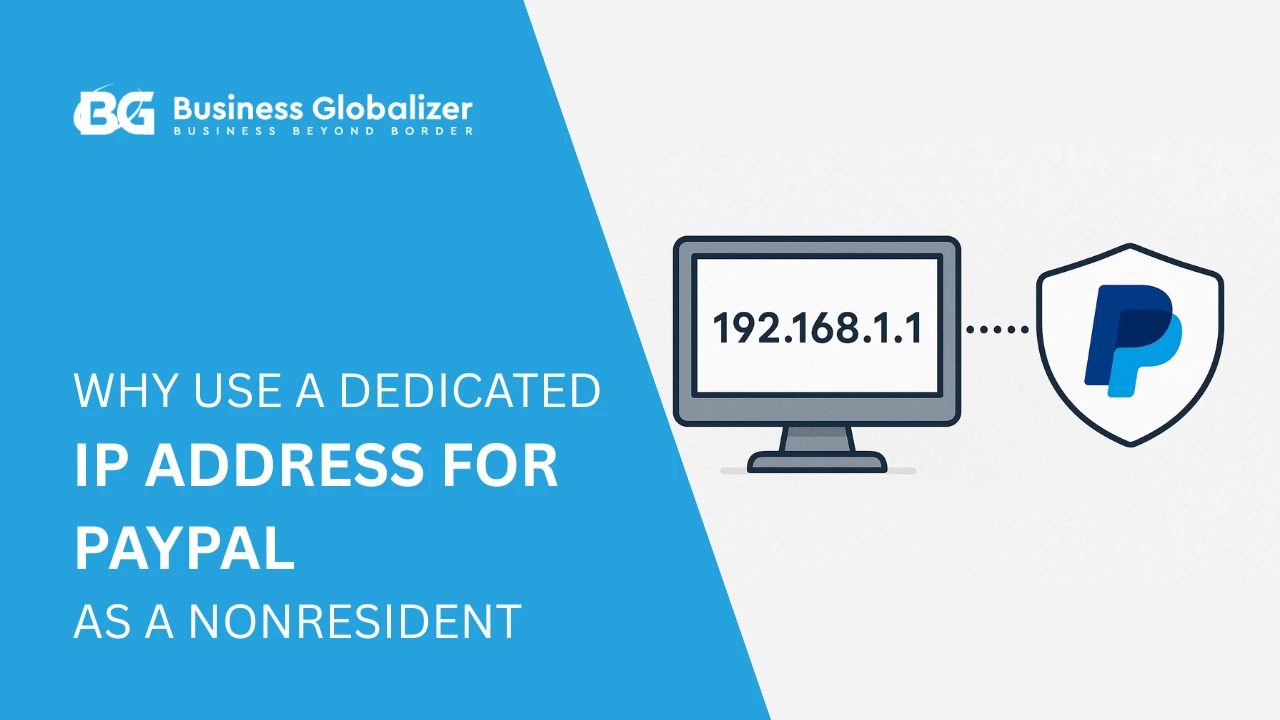Choosing the right payment gateway is necessary to focus on your business. Stripe and PayPal are leaders in payment solutions. But which one is better for your business?
Both Stripe and PayPal have the usual features like invoicing, payment processing, and money-transfer services. While Stripe offers more features for your buck, PayPal is effortless to use. Picking the best one between Stripe and PayPal feels like searching for apples in even more apples.
No worries, here’s how to determine the one that suits your use case:
A Quick Comparison Between PayPal and Stripe
| Factors to Consider | Stripe | PayPal |
| Key Features | 1. Advanced support team. 2. High-grade security options. 3. Versatile currency compatibility. | 1. Comprehensive proprietary system worldwide. 2. Strong overseas transaction support. |
| Security Features | 1. Compliant with PCI technology. 2. Advanced fraud monitoring tools. 3. Blocks fraudulent sellers AND IPs instantly. | 1. PCI compliant technology 24/7 fraud detection. 2. Automatic banning of high-risk accounts. |
| Payment Gateways | 1. Credit and debit cards 2. ACH payments. 3. Google Pay, Microsoft Pay, Apple Pay. 4. Other foreign payment gateways. | 1. Credit & debit cards. 2. ACH payment processing. 3. Pay In 4, Venmo, and Google Pay. |
| Business-Based Features | 1. Processes e-commerce payments compatibility. 2. Client billing and invoicing 3. Supports point-of-sale system. 4. Offers advanced merchant cash financing. | 1. Supports billing and invoicing services. 2. Offers business loans. 3. E-commerce payment processing. |
| Limitations/Missing Features | 1. Bundled pricing plans for premium access. 2. Compatible POS app 3. Mandatory credit card readers. | 1. Competitive pricing plans for premiums. 2. 3-5 day delays for ACH transfers. 3. Limited customization features. |
| Best For | 1. Customizable businesses 2. Multi-channel sellers. 3. Overseas e-commerce. 4. Businesses with huge data management. | 1. International commerce and consultant companies. 2. Concise businesses with minimal sell volumes. 3. Businesses that require client invoicing. |
Stripe Vs PayPal: Comparison of Features
Depending on your use case of the payment gateway, here is how Stripe and PayPal stand:
Payment Methods: Stripe Accepts More
PayPal and Stripe both accept credit and debit card payments, ACH payments, and Google Pay. But Stripe accepts Microsoft Pay, Apple Pay, and multiple other foreign payment methods.
Supported Countries: PayPal Works In More Countries
PayPal supports payment in 202 countries, whereas Stripe is functional in 47 countries.
Transaction Fees: Both Are Nearly Similar
Both PayPal and Stripe charge around 2.9% + $0.30 for standard online transactions.
Cross-Border Fees: PayPal Costs You More
PayPal charges 1.5% and Stripe charges 1% as a cross-border fee. Stripe is a better option here if your business serves globally.
Dispute and Chargeback Fees: Stripe Costs less
If you transfer $100, PayPal will cut $20 as chargeback fees. But, Stripe has a smaller $15 dispute and chargeback fee.
Currency Conversion Fee: PayPal Charges More
PayPal charges around 3% to 4% for currency conversion fees, whereas Stripe costs just 1.5%.
Hold Time: Stripe Holds For Longer
With PayPal, you can get immediate access to your funds. However, Stripe delays typically 2 days in providing access to funds.
Features & Conveniences: Stripe Offers More
PayPal offers three payment options. They are PayPal Checkout, PayPal Standard, and PayPal Pro. On the contrary, Stripe offers versatile monthly feature updates and supports recurring bills. Stripe’s additional convenient services are Stripe Connect, Stripe Atlas, and Stripe Billing.
Compatible Currencies: Stripe Supports More Currencies
Though PayPal is accessible in 200+ countries, it supports just 56 currencies. Stripe is functional in less than 50 countries, but it is compatible with more than 135 currencies.
Ease of Use: Stripe Is Easier
The setup process and payment system of Stripe are hassle-free and require less time compared to PayPal.
Pros & Cons of Stripe
Before you settle with Stripe, here are the good and bad you’re settling for:
Pros
- Stripe is more cost-efficient than PayPal for each transaction type.
- Provides versatile integration alternatives like POS, and merchant accounts.
- Offers flat-rate e-commerce services with highly customizable options.
- Multiple currency compatibility for overseas transactions.
- Requires no subscription, cancellation, or maintenance fees for trial services.
- Access giant marketplace and subscription tools with easy account setup.
Cons
- Stripe has limited tax accountability services
- Lacks a mandatory credit card reader feature
- Suspends accounts suddenly for any third-party transactions
- Has no virtual terminals and requires IT skills for the best outcomes
Pros & Cons of PayPal
Not sure if PayPal is a better option for you? Here are what PayPal brings to the table:
Pros
- Straightforward setup that requires no technical skills.
- Offers multiple membership plans with extensive integrations.
- Also supports virtual terminal and recurring billing systems.
- Easy to process automated streamlined payments in various currencies.
- Comes with a simplified and easy-to-use invoicing technology.
Cons
- PayPal is one of the most expensive payment solution software in the US.
- Charges a huge $20 fee for dispute and chargeback.
- Supports limited payment methods compared to Stripe.
Difference Between Stripe & PayPal
Stripe and PayPal both offer business payment solutions and process third-party transactions as well. However, these two have some noticeable differences. Let’s compare their features and services!
Features of Stripe
- Supports ACH (Automated Clearing House) payment options.
- Advanced personalization features with the lowest online fees.
- Supports more than 135 international currencies in 47 countries.
- Compatible with a comprehensive range of mobile wallet payment options.
- Featured with enhanced automatic fraud-prevention technologies.
Features of PayPal
- Best for receiving funds transferred through PayPal digital transactions.
- Has a virtual terminal and the lowest transaction rate for in-person payments.
- Holds the largest feature-based ecosystem.
- Easy to use for both novices and experts.
Common Features of Stripe and PayPal
- Processes in-person and online payments.
- e-commerce conveniences with flat-rate pricing.
- Supports multiple international currencies for overseas payments.
- Assists international commerce.
Stripe vs PayPal: Fees, Rates & Pricing
| Factors | Stripe | PayPal |
| Regular Transaction Fees | 2.9% + $0.30 | 2.9% + $0.30 |
| Dispute & Chargeback Fees | $15 | $20 |
| Non-profit transactions discount | 2.2% + $0.35 | 2.2% + $0.30 |
| Recurring Bills | 0.5% | 0% |
| Online Payment Fees | 2.9% + $0.30 | 2.59% to 3.49% + $0.50 |
| Micropayments Fees(<$10) | 5% + $0.10 | 5% + $0.5 |
| In-person card reader | Requires Paid Subscription | Free and Paid options are available |
| Refund Fees | No | No |
| Monthly or Setup Fees | $0 | $0 |
| Online Invoicing | Free for first $1 Million sales | Free |
Stripe Vs PayPal: Which One Is Cheaper?
In most cases, Stripe has cheaper card processing fees compared to PayPal. Stripe charges almost $3.2 (2.9% + $0.30) for a $100 transaction. Where PayPal charges between $3.08 to $3.98 (2.59% – 3.49% + $0.49) for each $100 transaction. PayPal’s higher transaction fee of $0.49 will significantly affect small to medium transactions. In a nutshell, Stripe is overall cheaper than PayPal.
FAQs on Stripe Vs PayPal: Which One Is Better?
Q1: PayPal or Stripe: Which is better for small businesses?
Answer: Based on the features and services, PayPal is better for small businesses. On the other side, Stripe is preferable for larger companies.
Q2: Does Stripe work with PayPal?
Answer: Stripe doesn’t work with PayPal. You cannot receive PayPal money with Stripe (vice versa). However, if you have both PayPal and Stripe, you can access a larger marketplace for your business transactions.
Q3: Which is more secure between PayPal and Stripe?
Answer: Both PayPal and Stripe are secure business payment solutions. They use the most advanced PCI compliance technology to encrypt and monitor all transactions.
How Business Globalizer Helps You on the Payment Gateway
At Business Globalizer, we primarily work for business formations in the USA and UK. All our business formation packages include a Stripe and PayPal account. We will do all the leg work for you to open an LLC and properly set up a PayPal and Stripe account. Thus, you don’t have to break a sweat setting the payment gateway of your new business.
Final Verdict
Which one better suits your business Stripe or PayPal depends on your business demands, client categories, and the payment method you accept. If your business is based on small merchants, then PayPal will be better and more cost-efficient. Business clients that require cross-border payments will greatly benefit from Stripe. If you want quicker access to your funds, we recommend PayPal over Stripe. Because Stripe holds your fund for 2 days. Overall, Stripe is better for versatile features, multiple currency transactions, advanced security, and cost-effectiveness.






